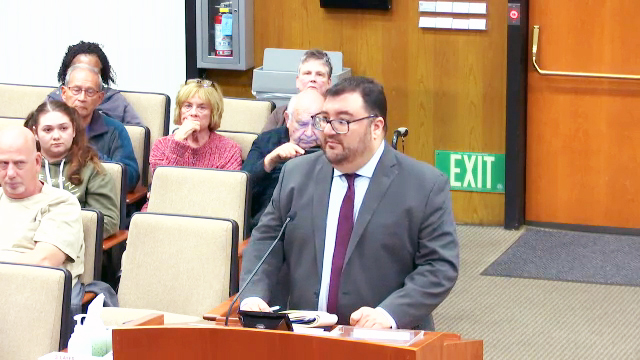With two years of executive sessions behind, a settlement agreement signed by the City of Cypress in a redistricting lawsuit has sent consultants and residents scrambling to carve up the city into single member representative districts by Feb 26.
Since agreeing to settle during mediation in late 2023, the city has been on a rapid, court-ordered plan to have final district maps by Feb. 26.
Therefore, the Cypress City Council has been meeting weekly trying to meet its court ordered deadlines and a proposed final settlement date scheduled for April.
According to Justin Levitt, Ph.D., Vice President of National Data Corporation, the city’s consultant, the city must decide on five districts with specific and limiting criteria and city officials must decide which of the districts will be implemented in 2024.
Levitt said the court ordered agreement orders the city to create five districts of approximately 10,000 voters each. As an example, the community of Rossmoor has approximately 3,500 homes and between 10 -11,000 residents.
Going forward, once fully implemented, Cypress will elect five Council members, one from each district once approved, of contguous areas of approximately 10,000 residents each. Under the court ordered agreement, at least one of those districts must be primarily inhabited by Asian voters and it must be implemented later this year.
The City of Cypress must creatfe five-voting districts that will meet all of the criteria imposed by the California Voting Rights Act and of course, the federal equivalent.
“Tonight is our first chance to really discuss and get into the draft maps,” said Levitt. “This is not the end of the process.”
Levitt thanked the community who turned in 28 maps. However, several of those maps did not meet very rigid criteria for such things as compactness, continuity, single boundaries and the communities of interest, etc.
“We received 28 maps from members of the community. Of these 28 maps, 11 did not meet the population balance requirements. Some were as much as 70 or 80% deviations are differences between the districts. Others were as close as around 11%,” said Levitt.
“Three more maps we identified as not compact, and four additional maps have compactness concerns,” he added.
In addition to prior state and federal district mapping criteria, Levitt said the maps also have to contend with the newly minted state Fair Maps Act as well.
However, there were several district maps drawn by residents that did pass muster and Levitt’s firm, NDC, had prepared three maps for consideration by residents.
The Council opened a public hearing to allow residents to make comments on the maps still under discussion, as Levitt and his team took notes to later be incorporated into the maps.
After the public had their say, the Council members themselves asked questions and provided input for Levitt to tweak the maps still under contention.
Council member Bonnie Peat tried to arrange a workshop requested by residents to better understand the digital tools they used to make the maps, but city manager Peter Grant said the tight deadline probably made it practically impossible at this stage of the process.
Levitt said while there are still changes for citizens to participate, input from residents need to be received as soon as possible.
“And so what we hope is that tonight, we start the process of choosing a subset of these maps, three to five focus maps, plus any new maps requested by the council or come in…that we can turn around two weeks from now and have a smaller subset of maps,” said Levitt.
Levitt said last week that in Monday’s meeting (two days ago), he hoped that of the maps that pass muster, a very small subset could be selected so that council members and the public can begin to isolate them and ultimately make any potential changes before finalizing the settlement in April.
Once approved, the Council must also choose which one of the other districts besides the Asian populated district will be implemented in 2024, and how the others will be phased in, he said.
In addition, according to the settlement agreement, the Council must have the plaintiff’s approval of the maps and the implementation plan before a judge will finalize the matter.

